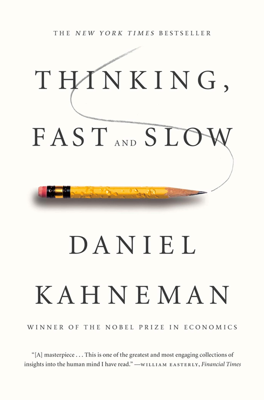Tom W’s Specialty
Tom W's Specialty and the Pitfalls of Representativeness
This chapter investigates the concepts of base rates, representativeness, and the common errors associated with them through a psychological study about a fictional individual named Tom W.
Base Rates and Initial Judgments - Base rates refer to the frequencies of different categories or events within a broader context (e.g., the number of students in different graduate programs). - When asked to estimate the likely field of study of Tom W without any descriptive information, sensible use of base rates would lead one to infer the field based on the number of students in each discipline, choosing the ones with the highest enrollment as most likely.
Effects of Descriptive Information on Judgment - The introduction of a personality sketch of Tom W alters the perception, causing people to use representativeness—matching the description to a stereotype of students in various fields. - Despite being informed of the personality sketch’s unreliable validity, study participants, including statistically educated psychology graduate students, often disregarded base rates and the potential inaccuracy of the description.
Representativeness Versus Statistical Judgment - The concept of representativeness involves making decisions based on how representative or typical a specific case appears relative to a general or stereotypical case. - Participants in the study largely judged the likelihood of Tom W’s field of study based on how well the description matched their stereotype of students in those fields rather than considering the actual statistical base rate distribution across various fields.
Common Errors in Judgment 1. Excessive Weighting of Unlikely Events: People tend to overestimate the likelihood of rare events if a specific instance appears representative of that event. 2. Insensitivity to Evidence Quality: Often, people accept information as valid unless they have a strong specific reason to reject it, a phenomenon known as WYSIATI (What You See Is All There Is), leading to judgments that don't account for the reliability or quality of the available evidence.
Balancing Representativeness and Base Rates - The chapter highlights a psychological experiment where altering cognitive effort (participants frowning versus puffing cheeks) changed the reliance on representativeness; those frowning showed some sensitivity to base rates, suggesting a more effortful engagement by System 2 when making these judgments.
Discipline in Intuitive Judgment - Bayesian Thinking: This statistical approach emphasizes how prior beliefs or base rates should affect the assessment of subsequent evidence, adjusting the degree of belief based on the new evidence's reliability. - Proper judgment requires anchoring approximations with plausible base rates and critically assessing the diagnosticity of evidence, a process that often demands substantial mental discipline and effort by System 2.
This examination of Tom W’s scenario sheds light on the pitfalls of intuitive judgment, particularly the overreliance on representativeness and the neglect of statistical principles such as base rates and evidence quality in decision-making processes.
